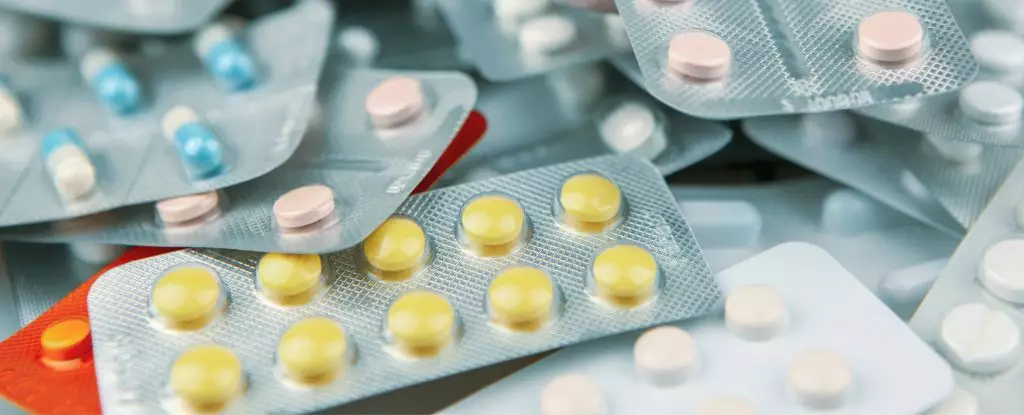The expanding role of generic medications in global healthcare has undeniably lowered costs while enhancing access to essential treatments. However, recent research underscores the critical need to reassess the safety and efficacy of these alternatives, particularly those manufactured in emerging markets. This article delves into the findings and implications of the study involving generic drugs from advanced and emerging economies, highlighting the need for regulatory scrutiny to ensure patient safety.
The Promise of Generic Drugs
Generic drugs have made significant strides in healthcare, largely attributed to their affordability compared to brand-name counterparts. They account for over 90% of all dispensed prescriptions in the United States, which illustrates their vital role in the pharmaceutical landscape. For many patients, these medications represent the only feasible option for managing chronic conditions without incurring debilitating costs. The belief that generics are identical to their branded versions—at least regarding active ingredients, dosage forms, and administration methods—has contributed to their widespread acceptance. Yet, the complexities of drug manufacturing processes may introduce variances that could affect patient safety.
Emerging Concerns from Recent Research
A recent comprehensive study conducted by researchers from Korea and the United States examined a broad range of generic medications. It revealed concerning discrepancies between generics produced in India and those manufactured in the U.S. The study assessed a total of 2,443 drugs, concluding that generics from India had a staggering 54% higher incidence of serious adverse events (SAEs), including hospitalization, disability, and, in some cases, death. While the study does not conclusively link these adverse events directly to the drugs themselves, the findings raise essential questions about the quality control mechanisms in place in international manufacturing plants.
These results do not imply that all Indian-manufactured drugs are subpar; however, they indicate a significant trend where generics from particular regions may pose heightened risks. This uneven distribution of safety highlights a potentially critical flaw in the FDA’s assertion that generics are universally interchangeable without reservations.
While the FDA continues to assure the public of the safety of generic drugs, the research calls into question the robustness of their oversight, especially for foreign manufacturers. Critics have noted that the FDA often lacks the resources and infrastructure necessary to scrutinize international facilities with the same intensity as those within U.S. borders. As a result, problems with manufacturing and quality assurance can go unnoticed, thereby jeopardizing consumer safety.
For instance, a significant challenge lies in the confidentiality that surrounds the locations and practices of generic drug manufacturers. This lack of transparency hinders efforts to assess the quality of generics and fosters skepticism regarding their safety. The commonly employed method for data collection in the study, the Structured Product Labeling set, bypasses some of these concerns but highlights the need for a more systematic approach to ensuring global compliance with safety standards.
To protect public health and bolster trust in the generics market, a paradigm shift in the regulatory framework is necessary. Advocates like In Joon Noh, the lead author of the study, urge for a deeper investigation into the operational practices of drug manufacturers. By doing so, the FDA could better understand the quality discrepancies observed in generics produced in low-regulation environments. By opening the lines of communication and information regarding where and how drugs are manufactured, patients and healthcare providers would be better equipped to make informed choices.
Moreover, the potential ‘race to the bottom’ phenomenon highlighted by the research points to a troubling trend where cost-cutting measures may result in compromised quality across the board. Competitive pressures in the pharmaceutical industry deserve scrutiny to ensure that the drive for lower prices does not come at the expense of consumer safety.
The findings from this significant study serve as a crucial reminder of the complexities and potential hazards associated with generic medications. As the healthcare landscape continues to evolve, consumers, healthcare providers, and regulatory agencies must remain vigilant about the quality of the medications administered to patients. Ensuring the safety of generic drugs is paramount, and fostering transparency in drug manufacturing practices will ultimately enable the healthcare system to continue reaping the benefits of affordability without sacrificing safety.
A cooperative effort to reevaluate and enhance regulatory mechanisms regarding generic drugs may lead to improved patient outcomes, reestablishing faith in the very medications that were supposed to democratize healthcare.


Leave a Reply